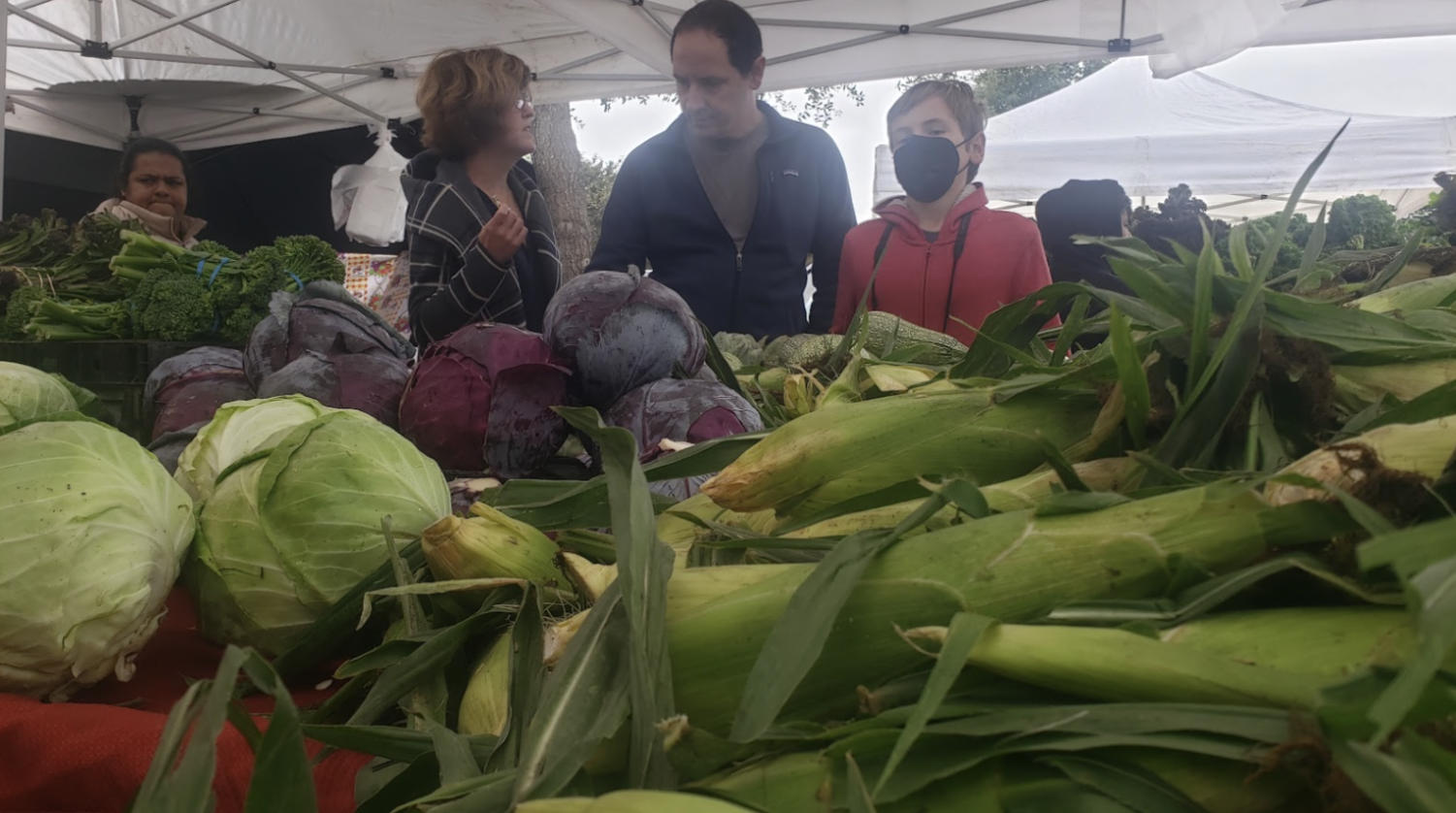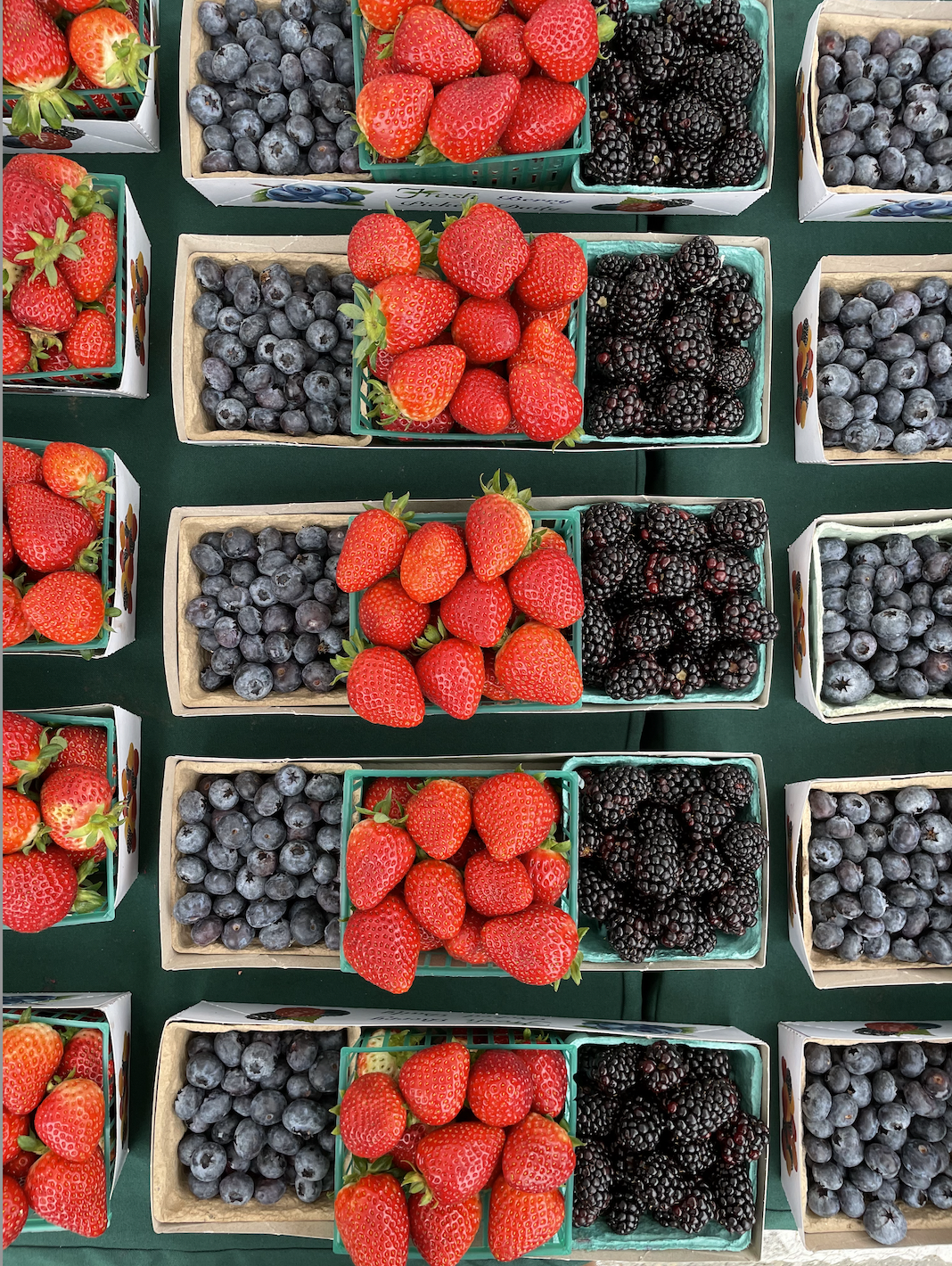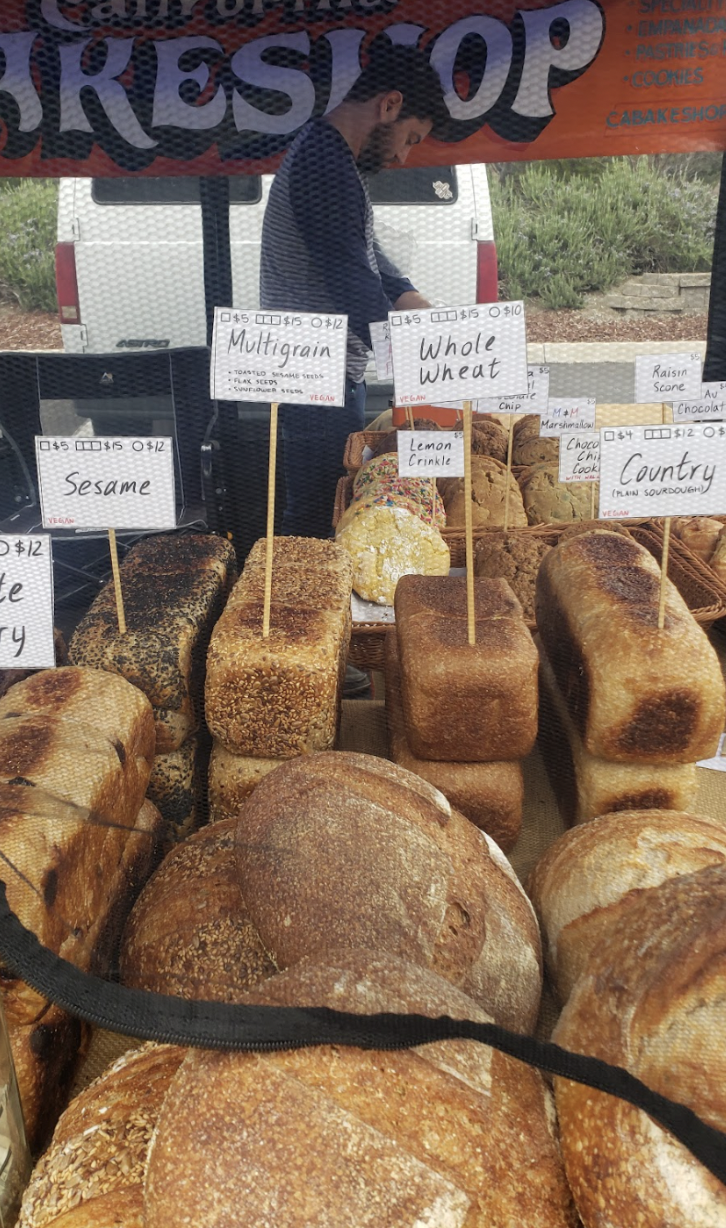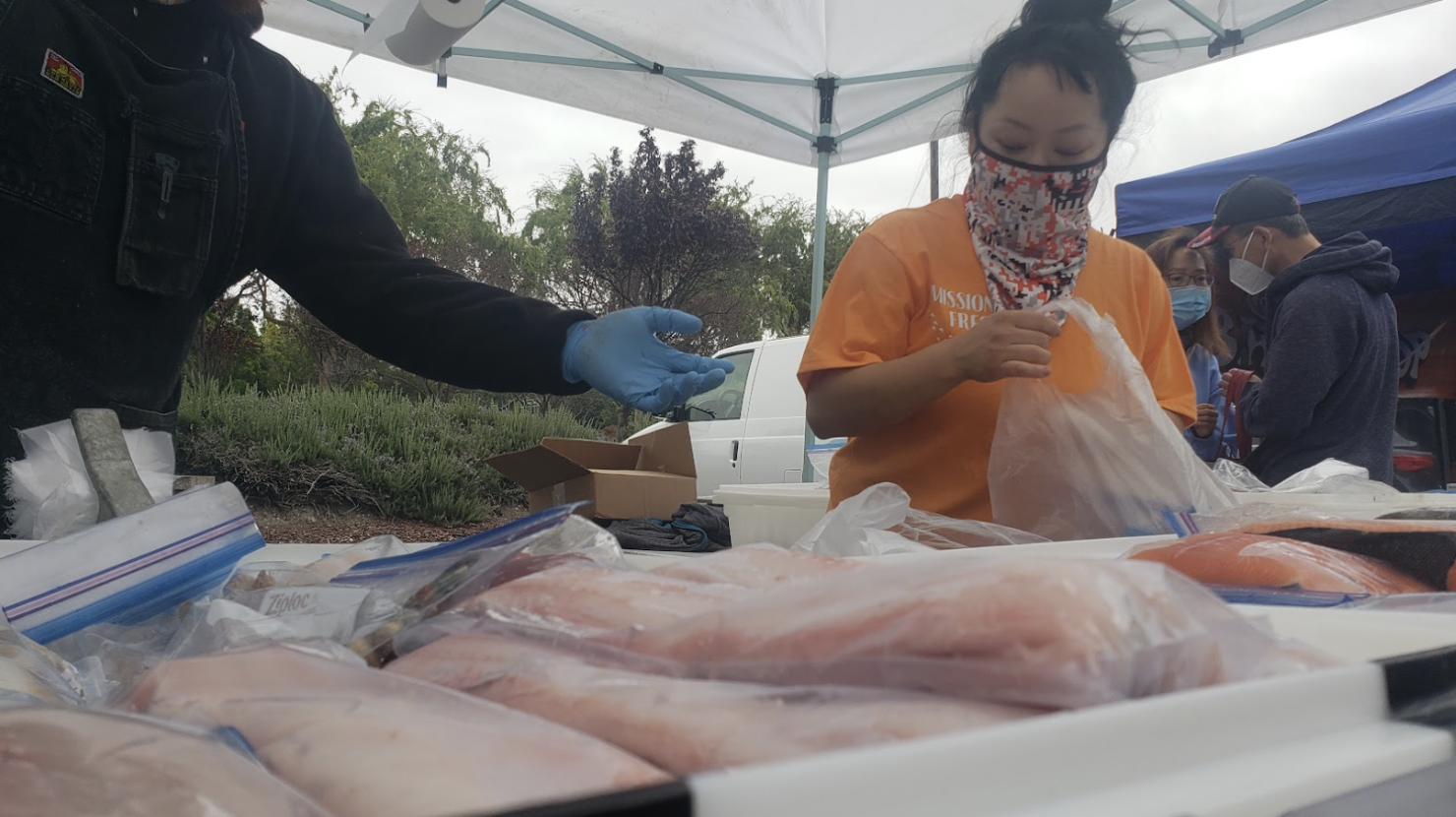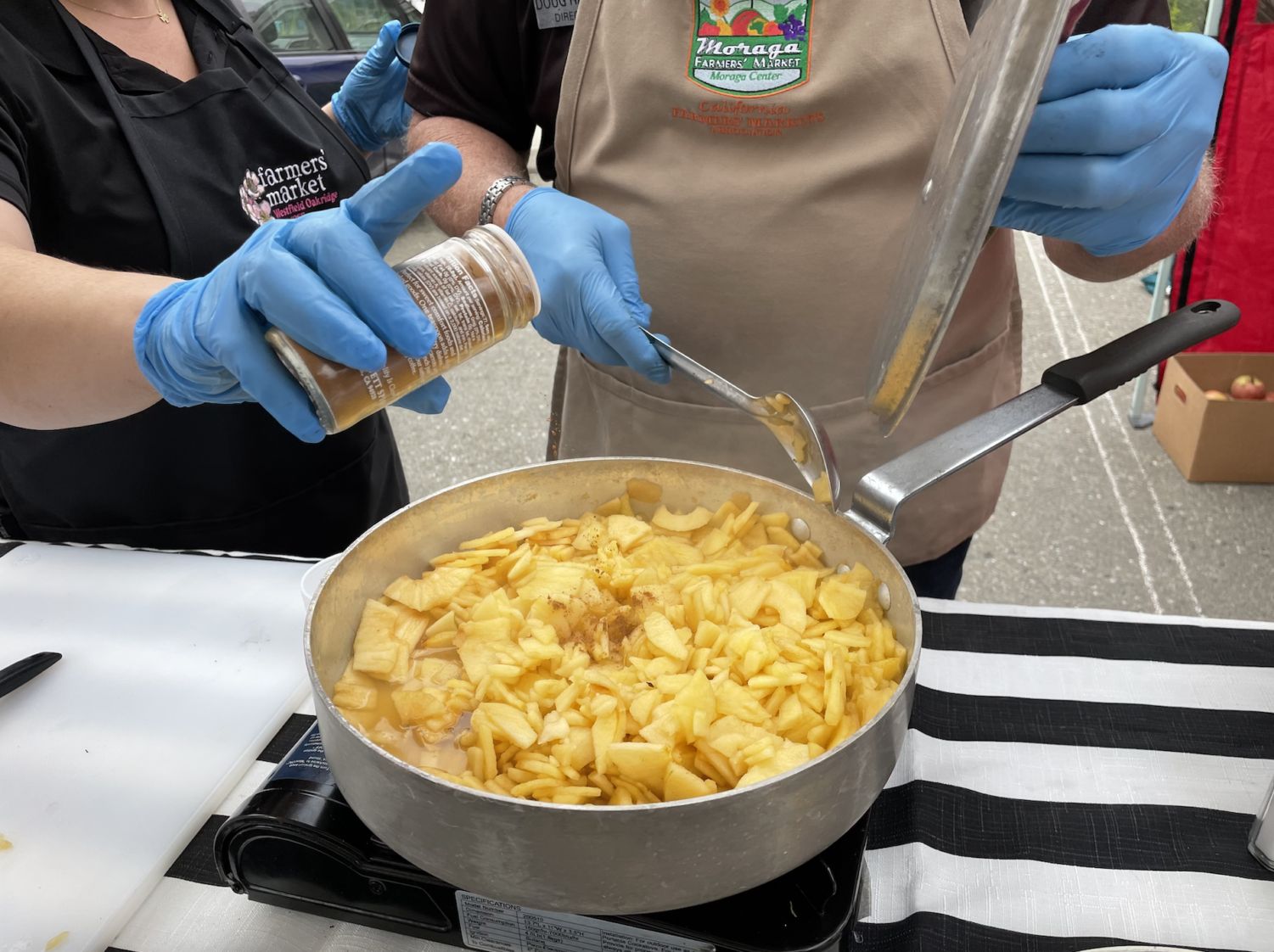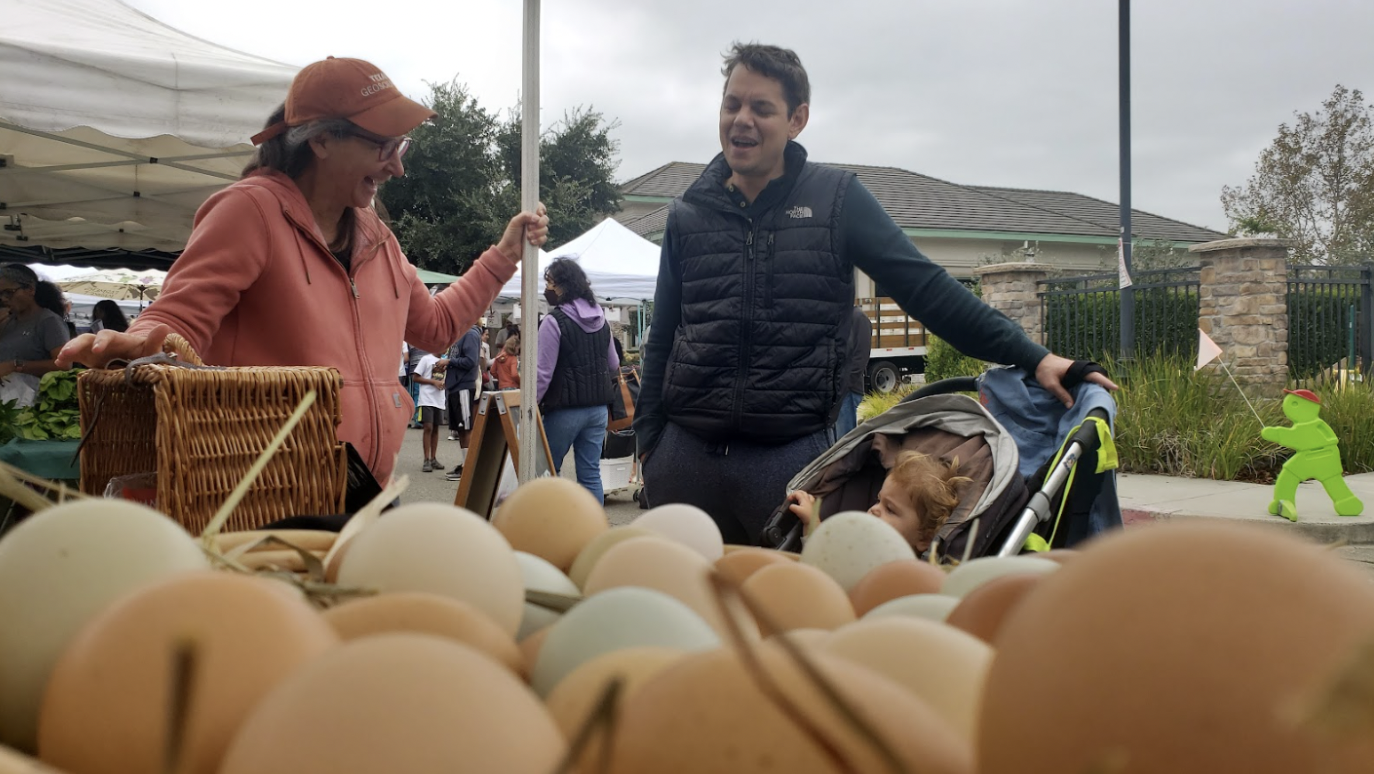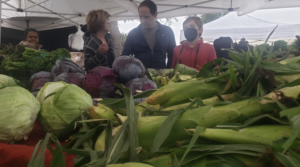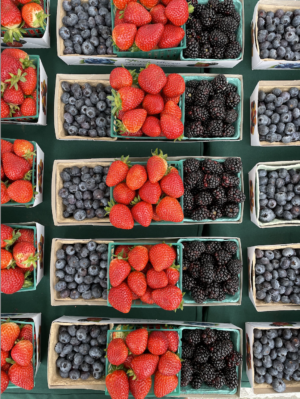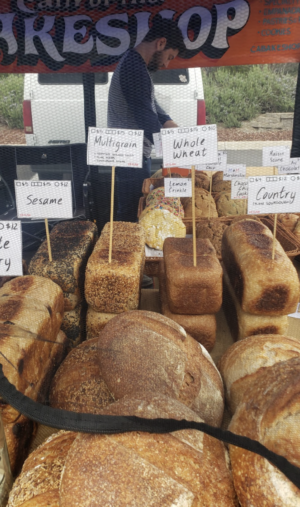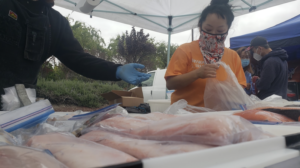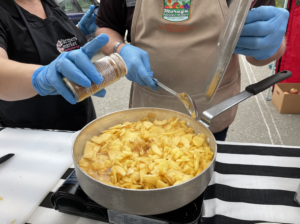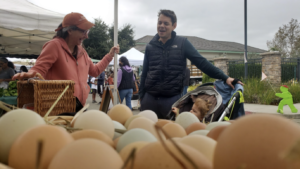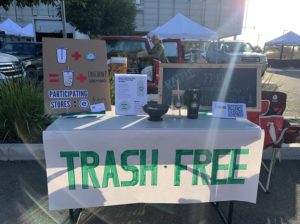Farmers’ markets promote a fruitful future
November 14, 2022
Solar panels. Electric cars. Windmills. Paper straws so we can “save the turtles.” As the planet hurtles closer toward a climate catastrophe, environmentalists are increasing their efforts to improve the state of our environment step by step, one plastic bag at a time.
However, many fail to realize that we are the root of the problems we so desperately try to reverse. It is unfair to blame large factories and production companies for the 300 million tons of plastic generated daily, while the average individual watches without attempting to intervene. Our reliance on convenient processes and materials is causing irreversible damage to our environment. At the very least, we must begin to make more eco-friendly decisions: reduce our plastic intake and conserve energy.
San Ramon’s local farmers’ markets check all of these boxes, giving back both to the environment and to the individuals that contribute to their unique atmosphere.
When people want to shop for groceries, they usually turn to their nearest retail supermarkets such as Walmart and Costco. Unlike farmers’ markets, supermarkets are considered an indispensable part of American society. Statista reported that the nations’ supermarket and grocery store sales amounted to approximately $766 billion in 2021, compared to the $2.9 billion that farmers’ markets made, reflecting the purchasing decisions made by the vast majority of the American population.
It is evident that farmers’ markets operate on a much smaller scale than supermarkets. Even so, their operation is efficient and effective. They are composed of numerous vendors, the majority being local farmers and business owners that sell specialty products such as honey or wheat-based-items. Small businesses are a pillar of the economy, making up 99.9% of all U.S. businesses.
Services at farmers’ markets fall into the food and agricultural sectors, which are largely family-owned. It goes beyond simply contributing to a small business; customers can support hardworking families, instead of large, impersonal retail corporations. And even with this vitality, farmers’ markets have surprisingly affordable prices for the average San Ramon consumer.
In the past, grocery stores were known for being affordable, especially compared to farmers’ markets. However, increasing inflation has led to a rise in the cost of groceries in many cities. By contrast, prices at the farmers’ market remain the same, which further diminishes the gap between supermarket and farmers’ market prices.
Dougherty Station Farmers’ Market manager Doug Hayden explains: “Usually, it’s a good price, because [the vendors] learn fast. If they charge too much they’re not going to sell their stuff. Economic supply and demand is quickly realized at the farmers’ market.”
But customers at a farmers’ market aren’t just paying reasonable prices. They’re paying reasonable prices for a higher quality of food which may not be found at a supermarket.
Supermarkets and grocery stores often market their produce as “fresh”, and customers take this at face value. Many don’t know about the extensive journey that fruits and vegetables take before arriving on grocery store shelves. In the U.S., meals travel an average of 1500 miles from farm to plate, and as many as 55% of fruits and vegetables we buy are produced outside of the country. Produce and meats are loaded with irradiation and preservatives in order to stay fresh throughout these lengthy journeys.
Meanwhile, the local nature of farmers’ markets lends their products a natural freshness. Julie Moua, a vendor for premium seafood company Mission Fresh Fish, explains that their fish are caught the same day they are sold, using sustainable methods. On the day we visited Moua’s stall at the Dougherty Station Farmers’ Market, the catch was from Half Moon Bay – less than 50 miles from where local customers could pick it up.
“We don’t overfish, we only catch what is available. We don’t do netting. Everything is line-caught here and it’s caught by people individually instead of machines,” Moua said, adding that grocery stores require their sellers to overfish to keep up with demand.
The local and fresh nature of produce at farmers’ markets result in a quality of food that just can’t be rivaled by supermarkets, and customers agree.
“When we buy from the grocery store…somebody else picks my vegetables. And they are never as good as if I picked them myself, and of course, that’s what you’ve got at the farmers’ market.” said Desiree Tieskotter, a customer at Dougherty Station Farmers’ Market.
Along with being fresher, some farmers’ market foods contain fewer pesticides. Over 70% of non-organic produce in the U.S contains pesticide residue, which may have adverse effects on the human body. Some pesticides have been proven to cause long term illnesses such as cancer and birth defects. Frontiersin.org explains that chemical pesticides have been associated with negative neurological and carcinogenic effects, along with short-term health impacts that might go unrecognized.
By contrast, farmers’ markets are more likely to be organic. Individual vendors can be certified as California Certified Organic Farmers, meaning they sell produce without synthetic pesticides or fertilizers.
But the benefits of farmers’ markets go beyond customers and sellers. Their positive impact extends to our environment as well.
The inside of a supermarket is kept pristine and organized, but the trash boxes outside tell a different narrative. From excessively large food containers to hefty plastic bags, grocery stores create an unfathomable 82 million tons of waste annually, which amounts to 28% of total waste.
There is nothing that stops retail grocery chains from using convenient and eye-catching material to market their products, not even the undeniable harm it causes to the environment.
In addition to causing ecological damage with plastic, Supermarkets also expend 1900 tons of carbon dioxide into the atmosphere a year. This waste, the equivalent of 360 vehicles, is caused by delivering food from farms to the food aisle.
How much harm are we unknowingly causing, just trying to get food on our plates?
At a farmers’ market, this question is rendered obsolete. Unpackaged produce at a farmers’ market has already led to a great reduction in plastic waste. In addition to this, many customers bring reusable tote bags, or other sustainable carrier bags. The biggest contributor to plastic waste at a farmers’ market would be single use plastic bags, that are often used to store food.
CO2 emissions are minimized as well, as farmers drive much smaller distances to the market.
As well as releasing deleterious materials into the environment, they are rife with food waste as well. About 30% of food from grocery stores in the U.S. is thrown away annually. This amounts to 16 billion pounds of waste, usually thrown away due to small imperfections in the product such as shape or color.
Considering that the average American eats around a ton of food annually, all the food thrown out from American supermarkets could feed over 8 million people every year. As our population’s ecologically footprint grows dangerously large, we cannot keep condoning such wasteful practices.
In contrast, farmers’ markets produce food according to customer needs in order to create minimal waste. After hours, lots of leftover produce is donated to churches, or given to low income families. Vendors also trade produce with each other and indulge in each others’ products.
But farmers’ markets have been on the radar of health and environmentally-conscious Americans since they became popular in the 1970s. So why do we still find ourselves lured towards the glittering lights of Safeway and Costco?
The answer is simple: convenience. Sorting through produce on your own is more time-consuming than a quick scan of grocery aisles, and the weekend only timing of San Ramon farmers’ markets is less than optimal. But what many people don’t realize is that farmers’ markets are worth spending a little more time at – because you aren’t just paying for food, but for a full experience.
Picture a Sunday morning at the Dougherty Station market. Strolling through the array of colorful tents, you’re enveloped in the scent of freshly-baked bread and the lively guitar tunes of a local musician. With paper cups of cinnamon applesauce warming your hands, made before your eyes in a cooking demonstration, you can savor the experience of browsing each stall and chatting with the vendors, or laugh and wonder at an impromptu magic trick performance.
That beats hanging out at some soulless convenience store. Sure, the grocery store is a fun place to meet up with your friends, but visiting a farmers’ market gets you involved in a supportive community.
“I call this my second family,” Moua said. “A lot of my customers I’ve been helping since I was 13. A lot of them are really old and I love it. I’m like, ‘Oh my gosh, there’s my grandma, my market grandma.’ I have, like, five…They bring me food, they know when my lunch is. And that’s what you call a really good community.”
Anyssia Ramirez, who works at the Ramirez Family Apiary in Contra Costa County, believes that markets are a special experience for both vendors and customers. Not only can buyers engage with the farmers and learn where their food comes from, but sellers also depend on the community for direct feedback on their products and business strategies.
“It’s a community of farmers, it’s a community of vendors. It’s a community of families,” Ramirez said. “That’s really what this is… a community.”
So help this community flourish – find farmers’ markets near you, and stop by to browse. Bring a reusable shopping bag and a few friends. Between snacking on fruit samples and laughing at the musicians’ live commentary, or trying out the fun crafts and competitions on offer, you’ll find that there’s no better place to be on a weekend morning. And the environment will be a little better for your contribution.


